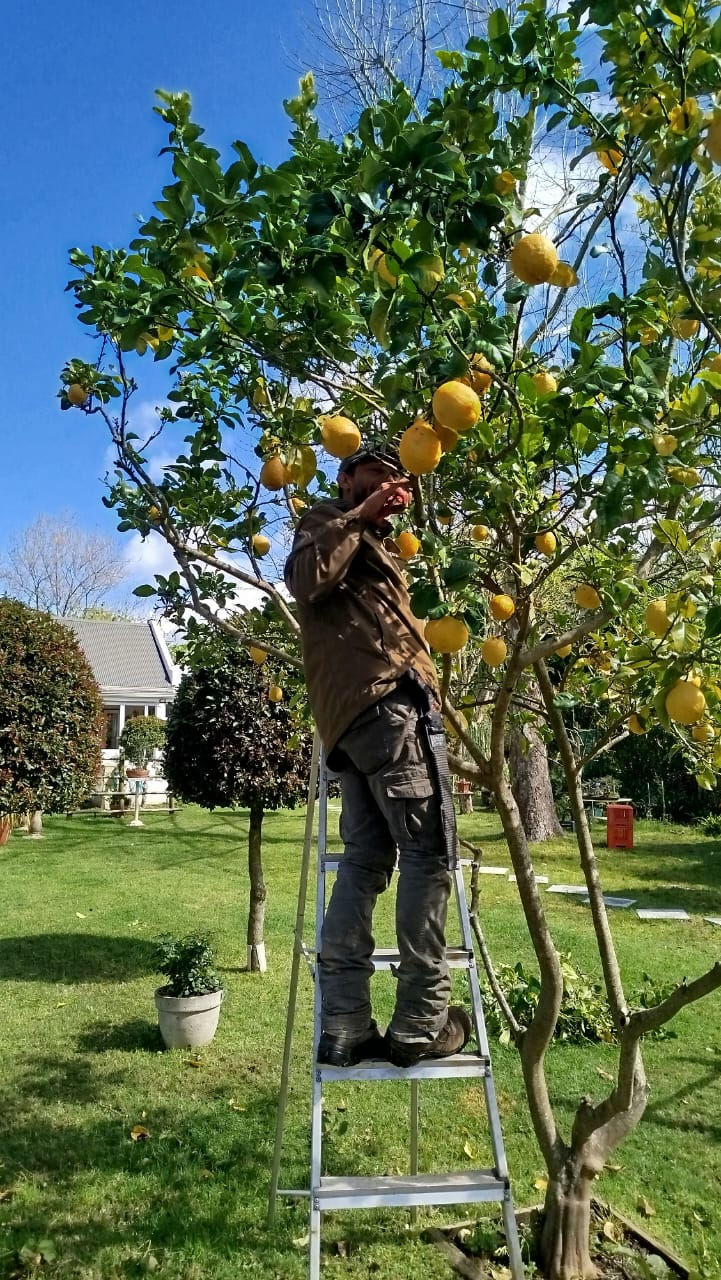How to Prune Your Lemon Tree: A Guide for South African Gardeners
- Shelby Pietersen

- Feb 8, 2023
- 3 min read
Updated: Sep 8
Lemon trees are a staple in many South African gardens, providing a bountiful harvest of tangy fruits and a beautiful addition to any landscape. However, to ensure that your lemon tree remains healthy and productive, it is important to prune it correctly.

In this guide, we will explore the best practices for pruning your lemon tree, taking into account South African measurements and conditions.
When to Prune Your Lemon Tree for the First Time
The first thing to consider when pruning your lemon tree is timing. It is important to only start
pruning your lemon tree after it reaches 2 years of age. This is because pruning a young tree
can cause overproduction of growth nodes, resulting in a leggy tree.
Aim to prune your lemon tree at the end of winter, or early spring - just before the tree starts to shoot out new growth.
Tools and Preparation
Before you start pruning, it is essential to have the right tools. A sharp pruning tool, such as a saw or shears, will make the job much easier and will result in cleaner cuts. It is also important to sterilize your tools before and after use, to prevent the spread of diseases or harmful bacteria. To do this, simply wipe down your tools with rubbing alcohol.
Removing Sucker Shoots
The first step in pruning your lemon tree is to remove sucker shoots from the base of the plant. Sucker shoots are small, slender branches that grow from the base of the tree and do not contribute to fruit production. To remove them, simply cut them flush with the stem.
Removing Dead, Damaged, and Diseased Branches
As you prune your lemon tree, it is important to keep an eye out for any dead, damaged, or
diseased branches. These should be removed as soon as they are noticed, to prevent the
spread of disease and to promote healthy growth.
Thinning Out the Branch Structure
Thinning out the branch structure of your lemon tree is an important step in pruning. This will
ensure proper light penetration and aeration, which will promote healthy growth and a bountiful harvest. When thinning out the branch structure, try to leave at least 3-5 inches of the branch, if possible, to allow the tree to recover from pruning.
Removing Double Shoots and Cross Shoots
Another important step in pruning your lemon tree is to remove any double shoots or cross
shoots. These are branches that grow close together and can compete for light and nutrients.
When removing double shoots or cross shoots, always remove the inside shoot.
Shape and Proportion
When pruning citrus trees, it is essential to think about the shape of the tree. Lemon trees look especially attractive with a characteristic round crown. This can be achieved by removing any branches that grow out of proportion or that detract from the overall shape of the tree.
Limiting Pruning to One-Third of the Tree
It is important to remember that when pruning your lemon tree, you should never remove more than one-third of the tree in one year. This will ensure that the tree has enough time to recover and will prevent the overproduction of growth nodes.
In conclusion, pruning your lemon tree is an important step in ensuring its health and
productivity. By following these guidelines, you can promote healthy growth and a bountiful
harvest, while maintaining the shape and beauty of your lemon tree.
Remember only to start pruning your lemon tree after it reaches 2 years of age, use sterilized tools, remove sucker shoots, and dead, damaged, and diseased branches, thin out branch structure, remove double shoots or cross shoots, and shape and proportion, and limit pruning to one-third of the tree within one year.
Happy pruning!
If you’d like to contact a professional to prune your lemon trees, contact Overberg Arborists today.





Comments